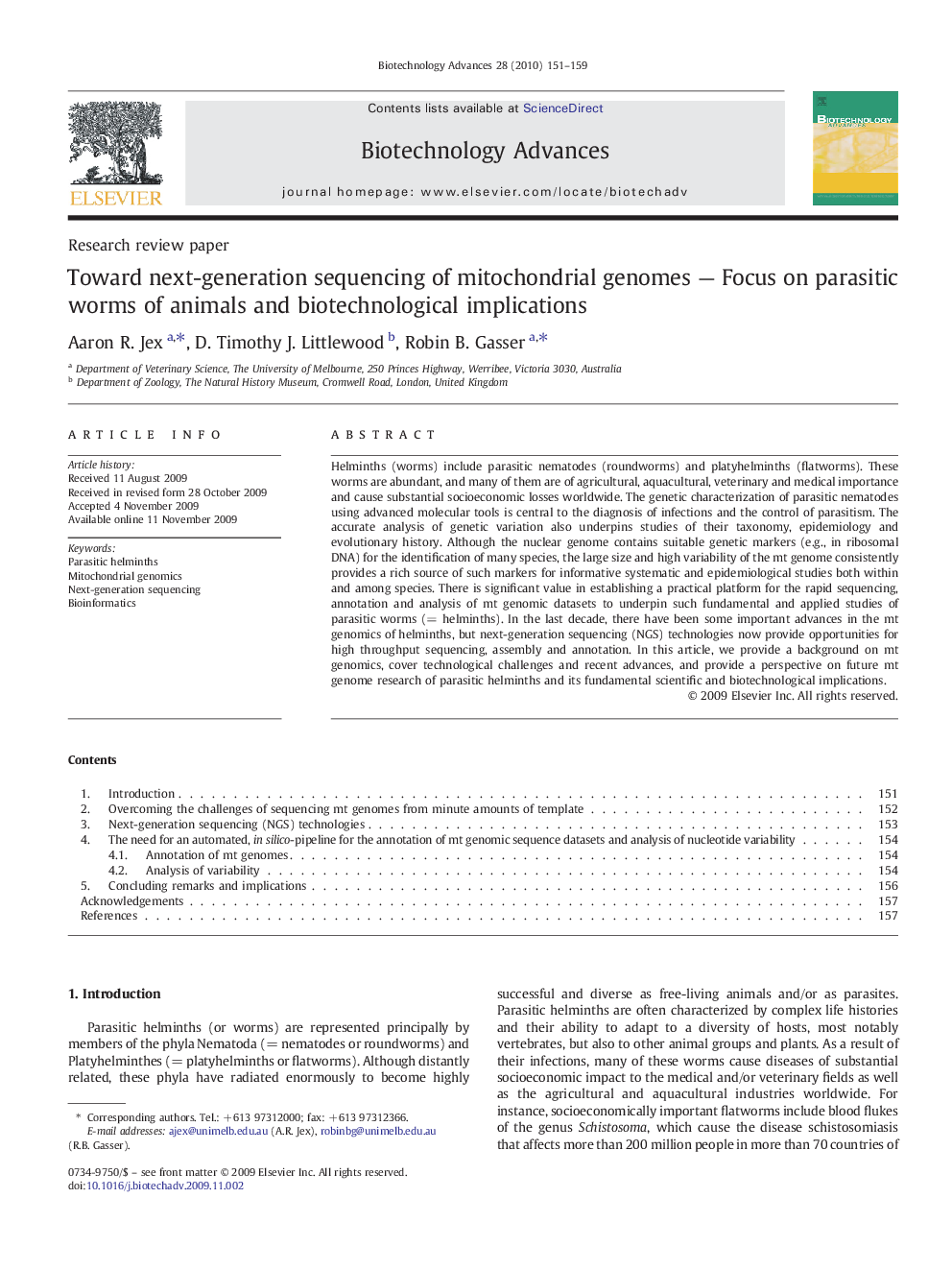| Article ID | Journal | Published Year | Pages | File Type |
|---|---|---|---|---|
| 14767 | Biotechnology Advances | 2010 | 9 Pages |
Helminths (worms) include parasitic nematodes (roundworms) and platyhelminths (flatworms). These worms are abundant, and many of them are of agricultural, aquacultural, veterinary and medical importance and cause substantial socioeconomic losses worldwide. The genetic characterization of parasitic nematodes using advanced molecular tools is central to the diagnosis of infections and the control of parasitism. The accurate analysis of genetic variation also underpins studies of their taxonomy, epidemiology and evolutionary history. Although the nuclear genome contains suitable genetic markers (e.g., in ribosomal DNA) for the identification of many species, the large size and high variability of the mt genome consistently provides a rich source of such markers for informative systematic and epidemiological studies both within and among species. There is significant value in establishing a practical platform for the rapid sequencing, annotation and analysis of mt genomic datasets to underpin such fundamental and applied studies of parasitic worms (= helminths). In the last decade, there have been some important advances in the mt genomics of helminths, but next-generation sequencing (NGS) technologies now provide opportunities for high throughput sequencing, assembly and annotation. In this article, we provide a background on mt genomics, cover technological challenges and recent advances, and provide a perspective on future mt genome research of parasitic helminths and its fundamental scientific and biotechnological implications.
